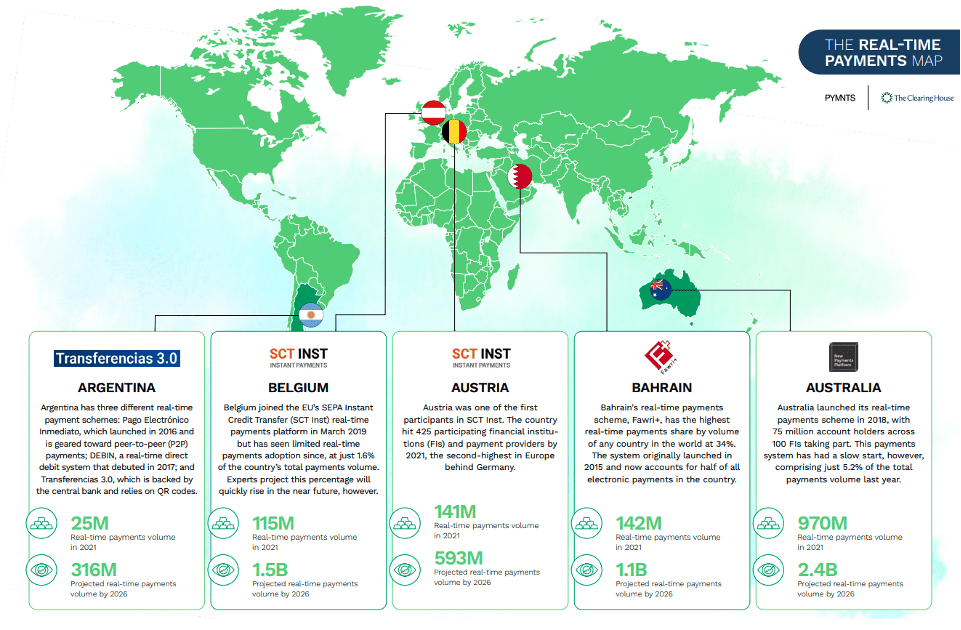Bahrain’s Real-Time Payments Volume Primed to Exceed 1B By 2026
A neighbor to Saudi Arabia is positioning itself as a potential instant payments global leader.
Real-time payments are quickly becoming a necessity for both domestic and international business transactions, from in-store point-of-sale (POS) to payroll to underpinning cross-border digital currencies. Indeed, it is small wonder that 61% of surveyed businesses believe that real-time payments implementation will give them a competitive advantage.
Companies and countries worldwide are investing in instant payments to meet this growing demand. Currently, 86% of businesses whose annual revenues range between $500 million to $1 billion use this transaction method, as do 60% of countries.
In an interview with PYMNTS, ACI Worldwide Chief Product Officer Debbie Guerra explained why this innovation is spurring countries and merchants toward adopting the payment method.
Real-time payments “create an unprecedented operational complexity for participants — but it also provides a once-in-a-generation opportunity for new [payments] offerings,” she said. “If you’re a merchant today, you want to be able to offer the payment methods that your consumers want to use and in the ways in which they want to engage … no matter if it’s through their cellphone, their mobile device, whether it’s in person or across different modalities.”
But like so many digital innovations across the globe, every nation’s adoption rate varies. Those with more advanced digital infrastructures may be more readily able to adopt real-time payments, while countries lacking these capabilities could find themselves a step behind. Of course, consumer willingness to use the innovation makes a difference as well, as China’s 18.5 billion real-time payments in 2021 compared to only 1.8 billion in the U.S. attests.
“The Real-Time Payments World Map,” a PYMNTS and The Clearing House collaboration, highlighted the evolution of countries, merchants and consumers in acceptance and use of the payments innovation. It found that Bahrain is fast emerging in the real-time payments space.

A few noteworthy indicators have marked Bahrain’s real-time payments innovations. In November, global remittance giant MoneyGram announced a partnership with Bahrain’s Beyon Money. This collaboration allows Beyon users to send money to more than 200 countries and is expected to go live in the following months.
Meanwhile, the United Arab Emirate’s Instant Payment Platform is slated to launch in the first quarter of 2023, with rolled-out phases following the initial launch involving a pilot group of licensed financial institutions. Leading the region’s Gulf Cooperation Council is Bahrain, which launched Fawri+ in 2015 and has seen significant adoption in the subsequent years. Fawri+ has grown from representing less than 1% of regional electronic transactions in 2017 to over 50% by 2021.
Each country is finding its own path toward the payment modernization. Bahrain, along with some other notable nations, are leading this movement.

